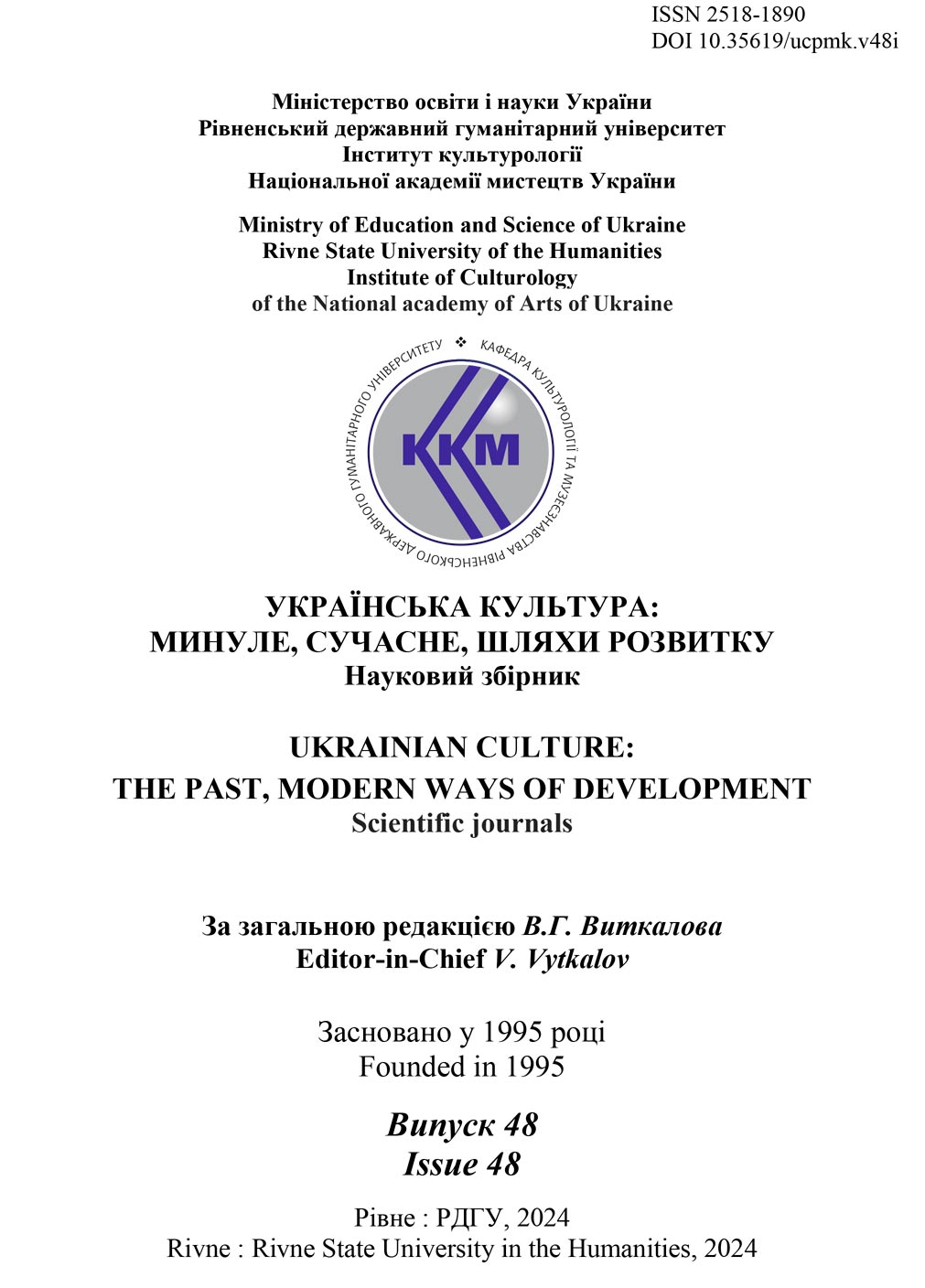FLOWER SYMBOLISM IN CHINESE DANCE : A CULTURAL DIMENSION
Abstract
Formulation of the problem. Chinese traditional culture with its unique civilizational history has demonstrated to the whole world an example of the highest skill and professionalism. Over the course of thousands of years, it developed on the basis of the laws of academicism as a guide to complying with regulated rules and unified norms, was passed down from generation to generation and aroused even greater interest of philosophers, historians, cultural experts, art critics, in particular choreographic specialists. Since in modern art there is sometimes a tendency to lose logic and beauty, to introduce experiments with means of artistic expression in dance, we have actualized the preservation of the classical dance tradition, its aesthetics, uniqueness, perfection.
Analysis of recent research and publications. When substantiating the content of the concept of «flower symbolism in Chinese dance», we took into account its interdisciplinary aspect. Questions of the philosophical, cultural, psychological content of art, its integration processes, preservation of cultural, aesthetic and spiritual values of humanity were studied by: S. Averintsev, A. Avdievskyi, I. Bekh, H. Vasyanovich, M. Zakovich, I. Zyazyun, H. Padalka, In particular, H. Pokotylo studies the concept of culture in the relationship between philosophy and art. «Taking a certain abstract idea from the bosom of philosophy, art reveals its essence on a single level through an artistic image», which helps a person to learn about the world, to get to the innermost meaning of philosophical, historical and cultural-artistic meanings. In the cultural dimension of the concept of flower symbolism in Chinese dance, this instruction was interpreted by us as a special phenomenon in the preservation of aesthetic and spiritual world values, academic choreographic traditions. Scientists: V. Anishchenko, M. Varii, S. Goncharenko, O. Yeroshenko, Z. Karpenko, V. Kondzolka presented scientific achievements regarding the content of art and artistic activity in their works. Current aspects of the theory and history of choreographic art, the formation of performing schools, and the dance culture of China were studied by: V. Altukhov, Wei Wei, Liu Yin, O. Pompa, O. Tishchenko, He Xuefei, Chen Kaisheng, Chen Jing, Zhang Homin, Ya Sisi and others In particular, Zhang Homin finds out the specifics and traditions of the northeastern and southern regions of the country; Liu Yin explores the peculiarities of Korean and Mongolian dances; I Sisi establishes a genetic connection between Chinese mythology and the art of dance, focuses his attention on its popular types: dragon dance, peacock dance, sword dance, etc. In our opinion, this specifies the multifaceted phenomenon of Chinese choreographic culture in its performance plane, however, in the research texts, we did not find sufficient information on revealing the figurative content of choreographic works and, in particular, delving into the meaning of flower symbolism in Chinese dance.
The purpose of the article is an in-depth study of traditional Chinese dance and a comprehensive disclosure of floral symbolism in it, which contributes to the cultural awareness, educational and emotional growth of the academic art community.
The research methodology is based on the use of the following methods: cultural, historical, source studies, as well as hermeneutic – for the interpretation of symbolism, which is of great importance in all areas of Chinese culture, comparative – the definition of Chinese traditional culture as having inevitable historical significance and viability,
artistic analogies – the identification of parallels between the philosophical concepts of image, form, ideal, which are inherent in the content of academic art, with the language of dance poses and movements, emotional perception of music and the artistic tempo of dance, etc.
The scientific novelty of this investigation consists in revealing the unified characteristics of the phenomenon of figurative symbolism of the flower in Chinese dance, which is based on the philosophy, painting, poetry, and music of this country and on which the synergy of various art forms is formed; identifying direct connections between the choreographic culture of China and academics as a criterion in the acquisition of mastery and professionalism.


